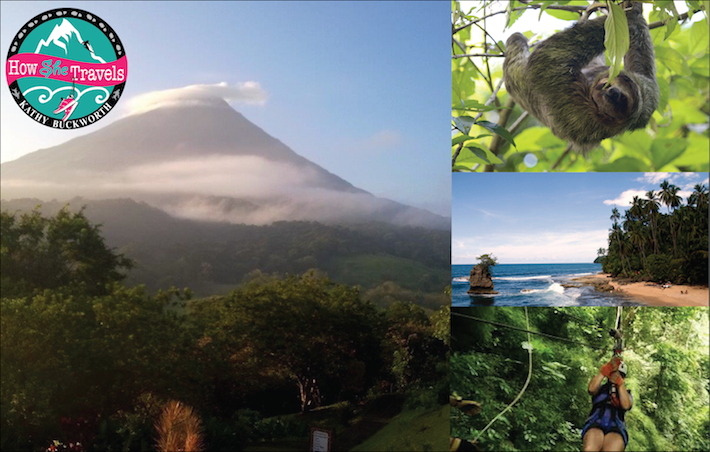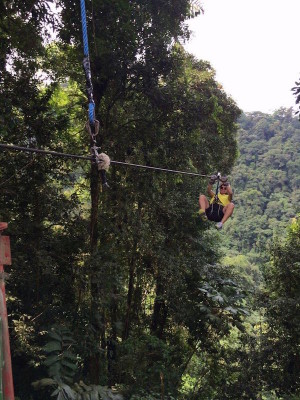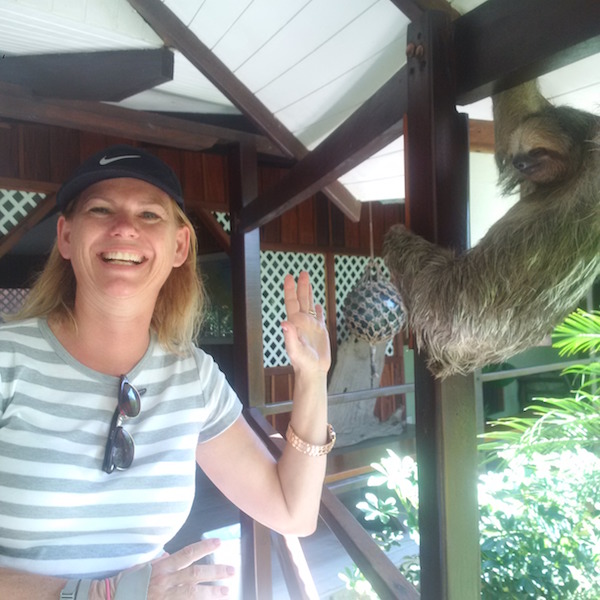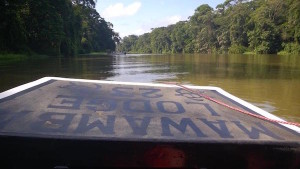
“Pura Vida” said our guide, as we arrived in San Jose, Costa Rica, which literally translated, means “pure life”. This describes the mandate of this eco-conscious country and the joy its inhabitants take in living in a land which is 46% forested; it is generally used as an answer to “How are you?”, or just as a hello.
They say hello, or good morning, early in Costa Rica. Year round, the sun rises around 5:30 and sets around 5:30. When the sun is up, there is a huge diversity of outdoor, natural and wildlife adventures to experience in this relatively small country. We had said goodbye to our cubicle office plants and hello to the pure life that awaited.
Tortuguero, on the Caribbean coast, is a small village of 1,000 inhabitants, accessible only by boat or airplane and is known for the turtle hatchings which happen on the beach in the dark of night. Hundreds of turtle nests produce thousands of eggs (of which 0.1% survive to adulthood), every May to November. Spotters from the National Park find where the nest has been dug, and quietly, without light, allow visitors to witness a turtle laying approximately 110 eggs. The turtles start laying eggs at around the age of 25, and do so until they are 150, coming back to the same spot, every two to three years.
But that’s not all the wildlife; the shores of the Tortuguero River leading in and out of the village are dotted with crocodiles, caimans, sloths, blue herons, macaws, toucans, and many other bird species. With some trepidation, we slid in to our kayaks to paddle the river, but found our voyage strangely serene, barring the prehistoric cries from the surprisingly tiny Howler monkeys which populate the area.
While the biggest exports from Costa Rica are bananas and pineapples, coffee is also a major crop industry. However, unable to compete with other countries larger production, most of the coffee is kept in the country, where the focus is on quality, not quantity.
The food in Costa Rica is a mixture of the cultures and people who came to this country after it was liberated by Spain. A railroad which was built to cross the country saw the immigration of workers (many of whom unfortunately died due to malaria) from Colombia, British Honduras, Italy, China and Jamaica. Their influence is still felt in the varying regions of the country as the railway moved across the country.
Across the country to La Fortuna, we found one of the most popular tourist spots in Costa Rica, with a huge variety of outdoor activities to choose from. From careening down Costa Rica’s highest zip line at Sky Adventures – half a mile, at over 60 miles per hour – to the hot springs, water parks, horseback riding, and many hiking trails available. The village is shadowed by the Arenal Volcano, which has been dormant since 2010. It’s hard to remember the water cooler gossip when you’re soaking in the natural hot springs; the perfect way to purify both body and brain at the end of a wild (life) and wonderful day.
For more information visit www.savethecanadians.org #PuraVida
An excerpt from this article originally ran in the Metro News.



by Kathy Buckworth
Author, I Am So The Boss Of You (Random House)
Family & Travel Expert, CBC’s Steven & Chris Show
Travel Expert, How She Travels, on Sirius/XM What She Said
Chief Family Advisor, President’s Choice Financial & PC Plus
Member, PWAC, TMAC, ASJA, CWU